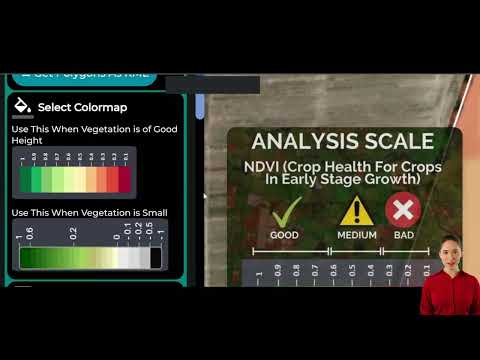Ethiopian Horticulture Exports Soar: Sustainable Practices and Investment Opportunities Transforming Agriculture
“Ethiopian flower exports have grown by 70% in recent years, reaching key markets like Germany.”
In recent years, we’ve witnessed a remarkable transformation in Ethiopia’s agricultural landscape, particularly in the horticulture sector. The surge in Ethiopian horticulture exports has not only put the country on the global map but has also created a ripple effect of positive changes across its economy and society. As we delve into this fascinating journey, we’ll explore how sustainable practices and investment opportunities are reshaping the face of Ethiopian agriculture.
The Blooming Flower Industry: Ethiopia’s Pride
At the heart of Ethiopia’s horticultural success story lies its flourishing flower industry. The country’s ideal climate, coupled with strategic investments, has propelled flower farming in Ethiopia to new heights. From the lush fields of Holeta to the sprawling farms in Hawassa, Ethiopian flowers are making their mark in international markets.
- Rose varieties dominate exports, with their vibrant colors and long shelf life
- Innovative cultivation techniques ensure year-round production
- Stringent quality control measures meet international standards
The growth of the flower sector has been nothing short of phenomenal. With exports reaching key markets like Germany, the industry has become a significant contributor to Ethiopia’s foreign exchange earnings. This success has not only boosted the economy but has also created thousands of jobs, particularly for women in rural areas.

Avocado: The Green Gold of Ethiopia
“Avocado production in Ethiopia’s Oromia and Sidama regions has increased by 50% due to sustainable farming practices.”
While flowers continue to be the flagship of Ethiopian horticulture, another green revolution is taking place in the form of avocado production in Ethiopia. The Oromia and Sidama regions have emerged as the epicenters of this booming industry, with their fertile soils and favorable climate providing the perfect conditions for avocado cultivation.
The surge in avocado exports can be attributed to several factors:
- Implementation of sustainable farming practices
- Introduction of high-yielding varieties
- Improved post-harvest handling techniques
- Growing global demand for healthy, nutrient-rich foods
Ethiopian avocados are gaining popularity in international markets, particularly in Europe and the Middle East. The fruit’s rich, creamy texture and nutritional benefits have made it a favorite among health-conscious consumers worldwide.
Sustainable Practices: The Backbone of Growth
The success of Ethiopia’s horticulture sector is not just a story of quantity but also of quality and sustainability. Sustainable farming practices have been at the forefront of this agricultural revolution, ensuring that growth doesn’t come at the cost of environmental degradation.
- Water conservation techniques
- Integrated pest management
- Organic farming methods
- Soil health management
These practices have not only improved yields but have also enhanced the quality of produce, making Ethiopian fruits and vegetables more competitive in the global market.
Pest Management: Tackling the False Codling Moth Challenge
One of the significant challenges faced by Ethiopian horticulture exporters has been the False Codling Moth. This pest has posed a threat to the quality and safety of exports, particularly in the fruit sector. However, through innovative horticulture pest management strategies, Ethiopia has made significant strides in controlling this menace.
Key initiatives include:
- Implementation of integrated pest management programs
- Use of pheromone traps for early detection
- Biological control methods using natural predators
- Strict pre-export inspection protocols
These efforts have not only improved the quality of exports but have also enhanced Ethiopia’s reputation as a reliable supplier of safe and high-quality horticultural products.
Empowering the Workforce: A Key to Sustainable Growth
The growth of Ethiopia’s horticulture sector has been accompanied by a strong focus on agricultural worker empowerment. Recognizing that a skilled and motivated workforce is crucial for sustainable development, various capacity-building initiatives have been implemented across the industry.
- Training programs on modern farming techniques
- Health and safety workshops
- Gender equality initiatives
- Financial literacy programs
These efforts have not only improved the lives of workers but have also contributed to increased productivity and quality in the sector.

Strategic Partnerships: Boosting Agro-Industrial Development
Ethiopia’s success in horticulture is also a testament to the power of strategic partnerships. Collaborations between the government, private sector, and international organizations have played a crucial role in boosting agro-industrial development and strengthening value chain linkages.
Key areas of collaboration include:
- Technology transfer
- Market access facilitation
- Infrastructure development
- Research and development
These partnerships have not only brought in much-needed expertise and resources but have also opened up new markets for Ethiopian horticulture products.
Investment Opportunities in Ethiopian Agriculture
The remarkable growth of Ethiopia’s horticulture sector has created a plethora of Ethiopian agriculture investment opportunities. From large-scale commercial farms to agro-processing facilities, the country offers a wide range of options for both domestic and international investors.
Key investment areas include:
- Greenhouse construction and management
- Cold chain and logistics infrastructure
- Organic farming projects
- Agro-processing industries
- Agricultural technology solutions
The Ethiopian government has introduced various incentives to attract investments, including tax holidays, duty-free imports of machinery, and land leases at competitive rates.
The Role of Technology in Ethiopian Agriculture
In the digital age, technology plays a crucial role in driving agricultural growth. Ethiopia’s horticulture sector is increasingly embracing innovative solutions to enhance productivity and sustainability. From precision farming techniques to advanced irrigation systems, technology is revolutionizing the way farms operate in regions like Oromia and Sidama.
One such technological innovation making waves in Ethiopian agriculture is Farmonaut’s advanced remote sensing and GIS solutions. These cutting-edge tools are helping farmers and agribusinesses optimize their operations in several ways:
- Real-time crop health monitoring
- Precise resource management
- Early pest and disease detection
- Yield prediction and optimization
By leveraging satellite imagery and AI-powered analytics, Farmonaut’s solutions are enabling Ethiopian farmers to make data-driven decisions, leading to improved yields and more sustainable farming practices.
Explore Farmonaut’s solutions:
Export Markets: Reaching Global Consumers
The success of Ethiopian flower industry growth and the rise of avocado exports have opened up new horizons for the country’s horticulture sector. Today, Ethiopian produce graces dining tables and adorns homes across Europe, the Middle East, and beyond.
Key export markets include:
- Germany: A major destination for Ethiopian flowers
- Netherlands: An important hub for re-export to other European countries
- Middle East: Growing market for fruits and vegetables
- China: Emerging market with high potential for growth
The diversification of export markets has not only reduced dependency on a single market but has also helped in stabilizing prices and ensuring year-round demand.
Challenges and Future Outlook
While the growth of Ethiopia’s horticulture sector has been impressive, it’s not without its challenges. Some of the key issues facing the industry include:
- Infrastructure bottlenecks, particularly in transportation and cold chain
- Fluctuating global market prices
- Climate change impacts on production
- Competition from other emerging horticulture exporters
However, the future outlook for Ethiopian horticulture remains positive. With continued investment in infrastructure, technology, and human capital, the sector is well-positioned for sustained growth. The government’s commitment to agricultural development in Africa, coupled with growing global demand for healthy and sustainably produced foods, bodes well for Ethiopia’s horticulture industry.
Ethiopian Horticulture Export Growth by Sector
| Export Sector | Export Value (in millions USD) | Year-over-Year Growth (%) | Key Export Markets | Sustainable Practices Implemented |
|---|---|---|---|---|
| Flowers | 350 | 15% | Germany, Netherlands, Middle East | Water recycling, Integrated Pest Management |
| Avocados | 80 | 50% | Europe, Middle East | Organic farming, Drip irrigation |
| Other Fruits | 120 | 20% | Middle East, Europe | Sustainable packaging, Solar-powered cold storage |
| Vegetables | 90 | 10% | Middle East, Europe | Greenhouse technology, Crop rotation |
| Total Exports | 640 | 18% | Global | Multiple sustainable practices |
Conclusion: A Bright Future for Ethiopian Horticulture
The remarkable growth of Ethiopia’s horticulture sector is a testament to the country’s potential in export-oriented agriculture in Africa. From the colorful flower fields of Holeta to the lush avocado orchards of Sidama, Ethiopia is carving out a niche for itself in the global agricultural market.
The success of this sector goes beyond economic gains. It’s about creating sustainable livelihoods, empowering rural communities, and positioning Ethiopia as a leader in sustainable agriculture. As we look to the future, the continued adoption of innovative technologies, sustainable practices, and strategic partnerships will be key to maintaining this growth trajectory.
For investors, farmers, and agricultural enthusiasts, Ethiopia’s horticulture sector presents a landscape of opportunity. It’s a chance to be part of a transformative journey that’s not only changing the face of Ethiopian agriculture but also contributing to global food security and sustainability.
As we conclude, it’s clear that the bloom in Ethiopian horticulture is more than just a fleeting success story. It’s the beginning of a new chapter in the country’s agricultural narrative, one that promises growth, sustainability, and prosperity for generations to come.
Frequently Asked Questions (FAQs)
- What are the main horticulture exports from Ethiopia?
The main horticulture exports from Ethiopia include flowers (particularly roses), avocados, other fruits, and vegetables. - How has technology impacted Ethiopian agriculture?
Technology has significantly improved Ethiopian agriculture through precision farming, advanced irrigation systems, and tools like Farmonaut’s satellite-based crop monitoring solutions. - What sustainable practices are being implemented in Ethiopian horticulture?
Sustainable practices include water conservation techniques, integrated pest management, organic farming methods, and soil health management. - What are the key challenges facing Ethiopia’s horticulture sector?
Key challenges include infrastructure bottlenecks, fluctuating global market prices, climate change impacts, and competition from other emerging exporters. - How is Ethiopia addressing the False Codling Moth problem?
Ethiopia is tackling the False Codling Moth through integrated pest management programs, pheromone traps, biological control methods, and strict pre-export inspection protocols.
For more information on how Farmonaut’s advanced agricultural solutions can benefit your farming operations, visit our API page or explore our API Developer Docs.







